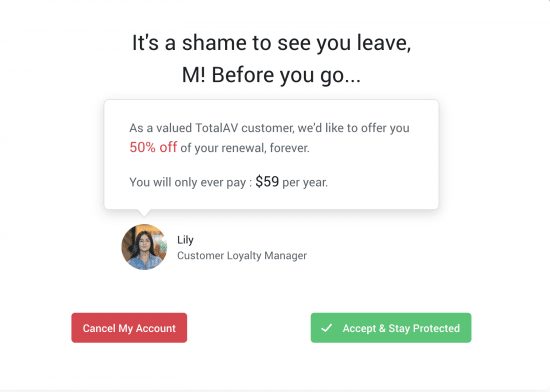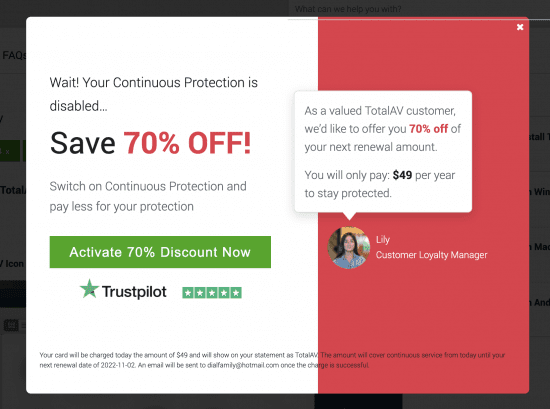When you’re running a business, it’s always painful to see a client leave. For starters, you know you’re going to have to replace the lost revenue. And getting new business is expensive. More significantly, when it’s a long-term client, you’re losing a “loyal” and generally profitable customer. But, it’s not because you don’t want the client to leave that you must make the departure heinously difficult to do. Especially when it comes to the subscription model, I’ve seen many ungainly — even unethical — practices. Recently, I had to jump through an unreasonable process to cancel a subscription. It was so painful that I was left with a terrible taste in the mouth and a desire to call them out. Allowing your customers to leave with ease is now part of a standard customer experience.
A good product is not enough

The perpetrator, in this case, is an anti-virus software comany, UK-based TotalAV. I suppose when you are working in a world populated with black hat hackers, maybe the environment rubs off on you? As they proudly write, “we pride ourselves in staying strides ahead of cyber-criminals, ensuring our users, like you, are provided with the highest level of antivirus protection possible.” I had been a client of TotalAV for two years, with a yearly subscription of $119. And, I can’t say that I felt the benefits, but I also didn’t get hacked. That’s the good news. It’s sort of a “no news is good news” situation. But, it’s not enough just to have a good product, even one that wins awards. In today’s world, you need to create a solid and ethical culture, oriented around making the customer satisfied and making your employees proud to work for your organization. Treat your employees as you’d like them to treat your customers. I refer to this as the inside-out model. In this particular case, as I will detail below, creating a spider trap is no way to work with your customers.
Time to unsubscribe
I decided to cancel my subscription when a third year renewal was upcoming. When I went on to the site, I logged in. Then it took me some five minutes of looking around to find any indication of how to cancel. Their site had ZERO indication or mention of how to cancel. The “Account” and “Billing” tabs just showed me what I had. I finally found, lost deep in their site, a page that said that I had to write an email to “cancel@totalav.com” to ask for cancellation. I had to write a specific email, adding my account number and formulating a written explanation. Then followed a slew of FOUR emails, each basically elongating the process and/or pleading for me not to cancel. Every step of the way, they also added in sweeteners, trying to lure me back.
Here’s an example of an “automated” messages the TotalAV marketing team have set up:
“I can certainly assist with your cancellation request, however, I must advise you of the potential risks before doing so.”
In the fourth email, I was told I would now need to fill in a form at the end of which, TotalAV sent me three more pop-ups that provided yet further attempts to hold me back with ever sweeter deals.


So, at the end of the tortuous process that was eminently manual, they were prepared to offer a subscription at $59/year… 50% off forever, with a more inviting green button to “stay protected.” But, in a classic case of 1980s marketing: wait there’s more! What a fool I might have been just to roll over my subscription, no?

All in all, this is a style of marketing that belongs in the 20th century. It speaks of a mindset that’s all about capturing and ensnaring customers, much like in a spider’s web. Sure, they might have a decent product (and yes, they’re well rated in Trustpilot), but I can only imagine the culture within the organization. It smacks of an ethically challenged management. And it’s just unacceptable to imagine a spider’s web as a way to keep clients from leaving.











